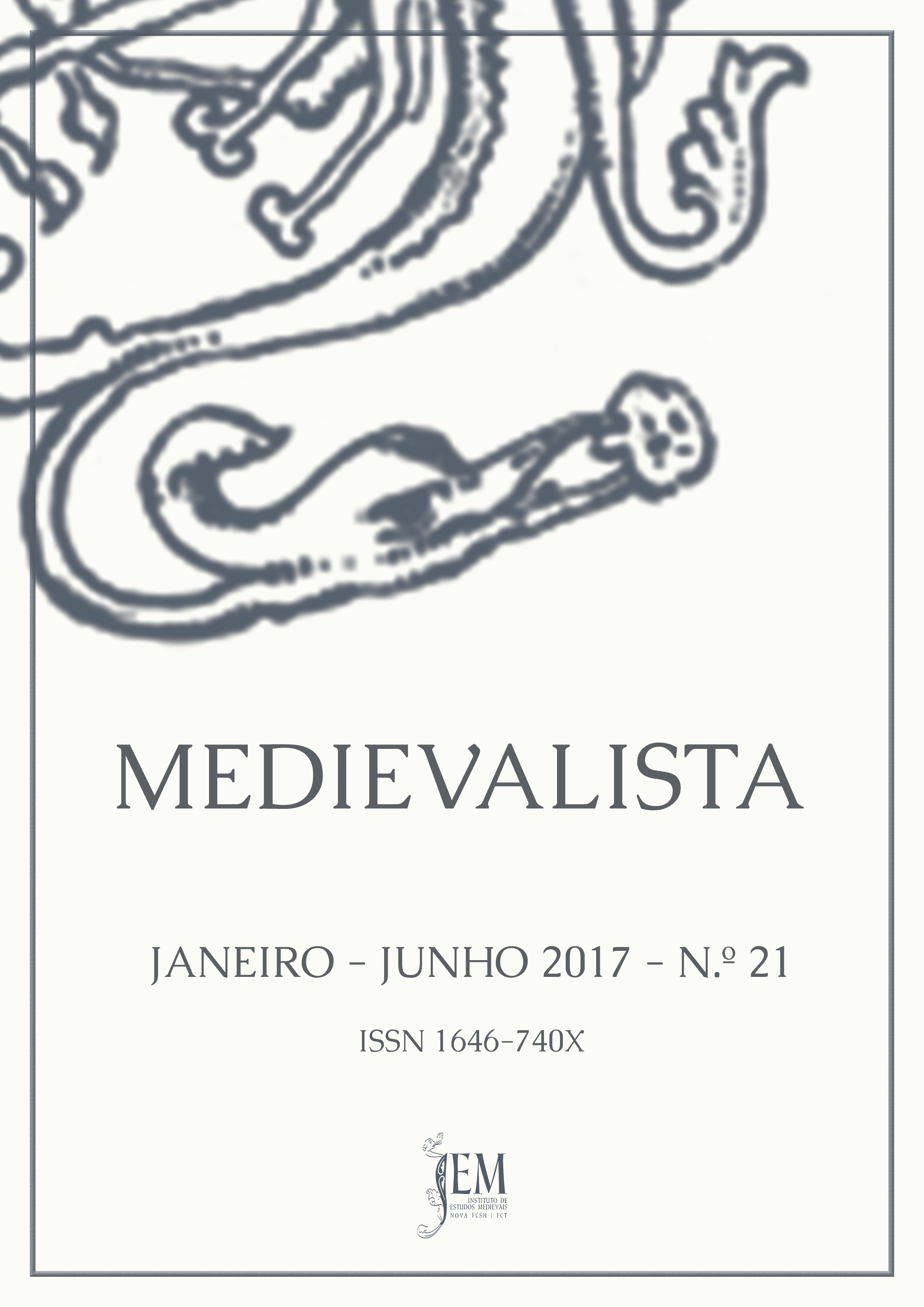A monstrificação dos irlandeses na imaginação geográfica de Giraldus Cambrensis
DOI:
https://doi.org/10.4000/medievalista.1259Palavras-chave:
Discurso colonial; Giraldus Cambrensis; Imaginação geográfica; Irlanda; MonstrificaçãoResumo
Mediante análise de Topographia Hibernica, primeira descrição topográfica da Irlanda, empreendida pelo cronista medieval Giraldus Cambrensis, este ensaio investiga como o discurso colonial inglês procurou legitimar a colonização do território por meio da monstrificação dos habitantes nativos. Ao atribuir aos irlandeses, sob o signo da abjeção, toda sorte de anomalias de gênero com base nos repertórios de representação disponibilizados pela teratologia medieval, Cambrensis caracteriza a Irlanda como um celeiro de sexualidades monstruosas e, desse modo, procura naturalizar a colonização como um necessário processo civilizador.
Referências bibliográficas
Fontes
AUGUSTINUS – De Civitate Dei. Venetiis: N. Jensen, 1475.
CAMBRENSIS, Giraldus – Topographia Hibernica, et Expurgatio Hibernica. Ed. James F. Dimock. London: Longmans, Green, Reader, and Dyer, 1867.
HAZLITT, William – “Why distant objects please”. in Table Talk. Vol. II. London: Henry Colburn and Co., 1822, pp. 219-238.
STRABO – The Geography of Strabo. Trad. H.C. Hamilton (vol. I a VI) e W. Falconer. Vol. I. London: Henry G. Bohn, 1854.
Estudos
AGAMBEN, Giorgio – L’aperto. L’uomo e l’animale. Torino: Bollati Boringhieri, 2002.
BARKER, Martin – The New Racism: Conservatives and the ideology of the tribe. London: Junction Books, 1981.
BENSHOFF, Harry – Monsters in the Closet: Homosexuality and the Horror Film. New York: Manchester University Press, 1997.
BERNHEIMER, Richard – Wild Men in the Middle Ages. Cambridge: Harvard University Press, 1952.
BRADSHAW, Brendan; HADFIELD, Andrew; MALLEY, Willy (ed.) – Representing Ireland: Literature and the Origins of Conflict 1534-1660. Cambridge: Cambridge University Press, 1993.
CIXOUS, Helene – “Sorties: Out and Out: Attacks/Ways Out/Forays”. in CIXOUS, Helene; CLEMENT, Catherine – The Newly Born Woman. Minneapolis: University of Minnesota Press, 1986, pp. 63-132.
COHEN, Jeffrey – Monster Theory: Reading Culture. Minneapolis: University of Minnesota Press, 1996.
COSGROVE, Art. (ed.) – A New History of Ireland: Volume II Medieval Ireland 1169-1534. Oxford: Clarendon Press, 1987.
FOUCAULT, Michel – Les mots et les choses: une archeologie des sciences humaines. Paris: Gallimard, 1966.
GILROY, Paul – There Ain’t No Black in the Union Jack: The Cultural Politics of Race and Nation. Chicago: University of Chicago Press, 1987.
HARPER-BILL, Christopher; VAN HOUTS, Elisabeth (ed.) – A Companion to the Anglo-Norman World. Woodbridge: Boydell, 2003.
HULME, Peter – Colonial Encounters: Europe and the Native Caribbean. London: Methuen, 1986.
KAPPLER, Claude – Monstres, démons et merveilles à la fin du Moyen Age. Paris: Payot, 1980.
KENNY, Kevin – “The Irish in the Empire”. in KENNY, Kevin (ed.) – Ireland and the British Empire. Oxford: Oxford University Press, 2004, pp. 90-122.
KRISTEVA, Julia – Powers of Horror: An Essay on Abjection. New York: Columbia University Press, 1982.
LECOUTEUX, Claude – Les monstres dans la pensée médiévale européenne. Paris: Presses de l’Université de Paris-Sorbonne, 1993.
LEFEBVRE, Henri – La production de l’espace. Paris: Éditions Anthropos, 1974.
MARCUSE, Herbert – Eros und Kultur: Ein philosophischer Beitrag zu Sigmund Freud. Stuttgart: Klett, 1957.
MCCLINTOCK, Anne – Imperial Leather: race, gender and sexuality in the colonial contest.London: Routledge, 1995.
MCVEIGH, Robbie; ROLSTON, Bill – “Civilising the Irish”. in Race & Class v. 51, 1 (2009), pp. 2-28.
PRATT, Mary Louise – Imperial Eyes: Travel Writing and Transculturation. London, New York: Routledge, 1992.
WILLIAMS, David – Deformed Discourse: The Function of the Monster in Medieval Thought and Literature. Exeter: University Exeter Press, 1996.

